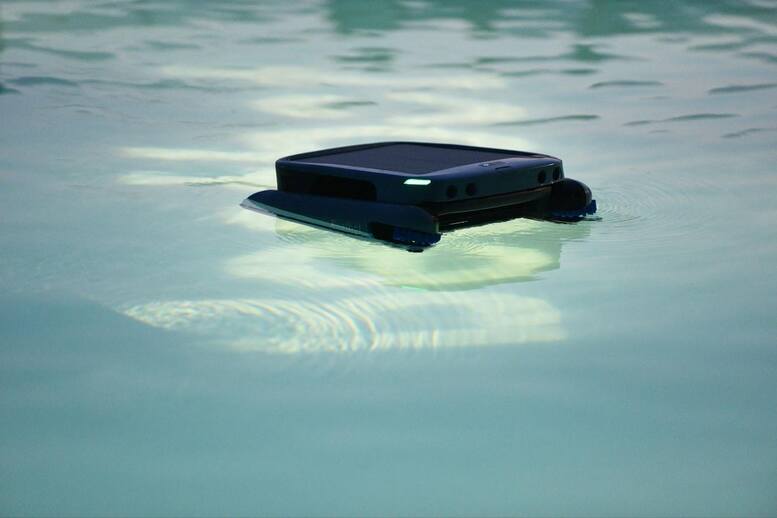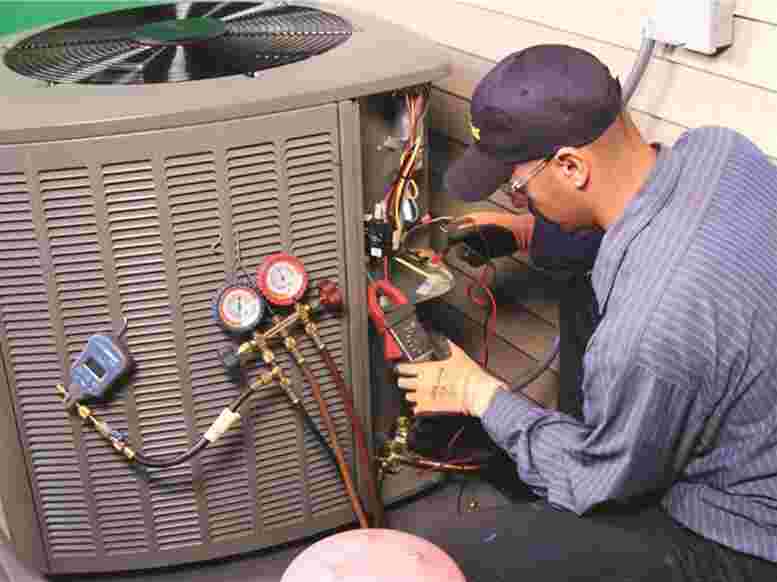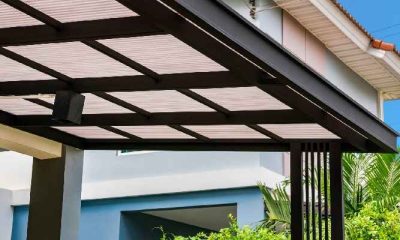Home Improvement
How to Build a Smart Home Security System: Step-by-Step Instructions

As technology continues to advance, smart solutions are being created for many problems. Today, keeping your home safe can be as easy as tapping a button or giving a command. Smart security systems are created to make sure that even without a human presence, our homes can be secure and protected from invaders.
In this article, we will be looking at the importance of smart home security systems and the step-by-step instructions for building a smart home security system.
A Smart Home Security System: Why It Is Important
Recent statistical reports from the FBI show that in the US, 2.5 million burglaries take place annually. What this means is that every 26 seconds, someone’s home is being broken into in the US. This is why you need to keep your home secure.
With the help of a smart home security system, you can take the worry out of safeguarding your home and reduce the chances of break-ins and burglaries. Let’s explore some of the advantages of having a smart home security system installed in your home: increased convenience and efficiency, home automation, remote monitoring capabilities and more.
With a smart home security system, you can arm and disarm your alarms with a single app, receive notifications when someone enters or exits your property and control devices around your home remotely. All this added convenience means you will have peace of mind knowing that your home is protected at all times.
Even if you’re not sure of what devices you need or how to incorporate them in your home, professionals at ADT home security systems help you get set up. With a smart home security system, you wouldn’t need to worry about leaving home, even for a long time. Protecting your property with a smart home security system is not just about keeping the bad guys out — it’s about giving yourself peace of mind knowing you can monitor and secure your home from wherever you are.
Besides protecting your home from intruders and burglars, a smart home security system will also keep you and your household protected from fire outbreaks. For example, smoke detectors can help alert you to a possible danger, before it gets out of hand.
In addition, a smart security system can also protect your household from carbon monoxide poisoning. A carbon monoxide detector will alert you if harmful levels of CO2 are detected. What makes smart home security systems even more valuable is the fact that they can integrate various devices.
Connect them to each other and then to your alarm system. And then making them accessible through one central point, which could be your smartphone or your computer. This means that you can monitor activities on your premises from your smartphone.
Step-by-Step Instructions for Building a Smart Home Security System


1. Choose a Smart Home Security Partner
Choosing a smart home security partner is the first step to getting started on building a smart security system for your home. They can help you set up all required security devices and show you how they work.
For example, an ADT package will include installing and activation of your devices at no extra cost. If you’re choosing to set up your security system by yourself, it is also important that you choose a security platform from where you’ll be getting all your devices and fixtures.
This way you can be sure that the devices are compatible and will work well with each other. Having a smart home security partner ensures that you have ready support in case of repairs and maintenance.
2. Start With a Video Doorbell
A video doorbell is one of the first devices to consider if you desire to build an efficient smart home security system on a budget. The front door is the most used entry point into a home. So being able to see what goes on there is critical for the security of your home.
A video doorbell can give you an extra layer of peace of mind when it comes to home safety. From seeing who is at the door to answering the door while you’re away, the advantages of using a video doorbell are endless
So even when you’re not actively monitoring the camera, you have saved footage that you can watch at any time and share with security personnel In case of trouble.
3. Include a Smart Camera to Cover the Whole House
Surveillance cameras allow you to see what is happening in every part of your house. These cameras also have inbuilt motion detectors, so you get alerts whenever anyone enters your property. And you can see visitors using your smartphone.
ADT security cameras are a great asset for beefing up your home security. Smart Cameras usually come in two types. Indoor cameras and outdoor cameras. The outdoor cameras are usually wireless and waterproof. This gives you the freedom to mount them anywhere you desire.
You would, however, need to charge their batteries every few months. The indoor cameras, on the other hand, require plugging in, and they usually have some kind of screen that allows you to block the camera when you want privacy.
4. Integrate a Smart Lock
An unlocked door is often an open invitation to burglars. So one way to make sure that your doors are always locked is to incorporate smart locks. A smart lock allows you to lock your door using your smartphone. This means that even when you’re away from home, you can keep your home secure.
One advantage of a smart lock is that you can create smart keys for regular visitors like housekeepers or babysitters. This allows them to have access to your home at designated times. This way, you wouldn’t need to give anyone your keys.
You can find smart locks that work well with your existing keys. You can also opt for one that doesn’t require keys at all. Some smart locks can be programmed to unlock automatically when you approach the door with your smart device.
Smart locks come with tons of advantages which can not only make life easier for you but can also provide an extra layer of security for your home. Whether you’re looking for the convenience of automatic door unlocking or the protection of secure PIN codes, a smart lock has got you covered.
5. Remember to Add a Smart Smoke Alarm
Fires are also part of security threats. With a smart smoke alarm, you get alerted whenever there’s a fire breakout in your home. Many smart smoke detectors can detect both flaming and smoldering fires. This way, you can be alerted before a fire outbreak gets out of hand.
The right smart smoke alarm can be integrated with the rest of your smart security system. You can add to your smart smoke alarm a carbon monoxide detector. This device will pick up on harmful levels of CO within your home and alert you immediately. This will help keep you from carbon monoxide poisoning
6. Do Not Forget Alarm Sensors
Alarm Sensors are a great way to prevent break-ins. They notify you if any entry point into your home is being forcefully opened. This means that you must include all windows and doors when you make provisions for alarm sensors. In case of a forceful entry, the alarm sensor will send a notification to your smartphone.
From detecting movement or vibrations to alerting homeowners to the presence of carbon monoxide or smoke, these sensors provide a wide range of benefits.
This way, you can quickly take action, like alert security operatives. One great feature of these alarm sensors is that the alarms are usually loud enough to attract the attention of other people. This way, even if you’re not home, neighbors can be alerted to s break in and call the police on your behalf.
7. Incorporate Smart Light Bulbs
With smart light bulbs, you can control specific light points in your home or the entire light setup. Smart bulbs can be programmed to turn on automatically when you step into the house and turn off once you step out.
Smart Lighting offers many advantages and possibilities. By using sensors and automated processes, it can make your home smarter, safer and more enjoyable. Whether you want to enjoy a beautiful ambience in every room or ensure that no energy goes to waste, smart lighting systems are the perfect choice for modern homes.
You can even use your phone to control their color and brightness. The great thing about smart bulbs is that they’re easy to install. In place of smart bulbs, smart switches are another great option. They can be used with the existing light fixtures in the house.
8. A Smart Garage Door Opener Is Also a Great Idea
You can also keep your cars and packages secure by installing a smart garage door opener. With this device installed, you can open and close your garage door from your smartphone.
You also get notified whenever someone opens the door. For extra security, you may decide to add a smart camera, so you can see anyone who enters or exits the garage.
Conclusion
With a smart home security system, you can keep your home secure 24 hours a day, regardless of where you are. A smart security system helps you to ward off danger by allowing you to see anyone within your premises.
This way, you can alert the appropriate authorities if you sense any suspicious activity. You’re not only protected from intruders, but a smart home security system can also protect your home from fire outbreaks and help prevent carbon monoxide poisoning.
However, to enjoy these enormous benefits, you must make sure to choose a security platform that suits your needs and addresses your pain points. You must also ensure that the devices that you use will work well with each other. So you can enjoy a seamless experience and cease worrying.
Home Improvement
Creative Upgrades That Add Personality to Every Corner of Your House


Your home is more than just a place where you eat and sleep. It is a reflection of you, a part of you, and above all, a sanctuary that reflects your style and preferences. Whether you’re a minimalist at heart or a fan of vibrant colors, you inevitably add pieces of your liking to your home. Infusing your home with your personality is one of the most rewarding aspects of interior design and home decor. There’s beauty in creating a personalized space that comforts you and reflects a part of yourself in each corner of your house. Small, thoughtful upgrades can go a long way, transforming even the most ordinary corner of your home into a statement piece.
Home decor is all about details and it’s often the most minute details that make your place stand out and make the biggest impact. A carefully chosen accent wall or a repurposed piece of furniture can lift the entire feel of a room and give it a sense of warmth and character. From unique color choices to decorative accessories, upgrades help breathe life into your home and add that extra hint of warmth to your bedroom or make your entryway truly majestic. According to Los Angeles property management experts houses with good decor sell at a better price compared to houses that lack personality and character.
In this article, we’ll explore a variety of creative ideas you can implement to upgrade your home and inject your personality into every corner of the house. So, if you are ready to move beyond generic colors and make your home truly a reflection of you, let’s dive into some of the creative upgrades that will add personality and character to every room.
Simple Upgrades To Make Your Home Truly “Yours”
- Statement Lighting Fixtures
Lighting is one of the transformative aspects of home design. A good accent light can immediately brighten up a dull corner. Placing overhead lights with bold pieces can truly elevate the look of your space. A boho-inspired lamp near the bedside can add warmth and comfort to your bedroom. For intimate touches, you can add wall sconces with intricate details and adjustable features to add charm and coziness to your rooms or hallways. In spaces like the living room or dining area, an oversized, eye-catching chandelier light can set the tone for the entire room. Under-cabinet lighting in the kitchen can also be used to give off a warm and welcoming atmosphere.
Did you know?
The median sale price for a home in Los Angeles, California is between $1.1 million and $1.3 million.
- Customized Wall Art and Murals
We all must have heard the saying, a painting is worth a thousand words. Walls are the easiest places to inject your personality through paintings and artwork. A good painting or a good mural tells a story that narrates your experiences directly or indirectly. A mix of gallery-style frames to display your artistic side along with family photos and vintage finds can create a meaningful pattern for your walls. Property managers in Washington suggest that houses with well-decorated walls attract good-paying tenants all year round. For a more personal touch, you can consider putting up unique prints or interesting souvenirs from your travels. From nature-inspired wall hangings to abstract geometric patterns, a mural can transform the entire walls and become the most eye-catching aspect of your entire house.
Did you know?
The average rent for a comfortable one-bedroom in Washington is $2,277.
- Textiles That Pop: Throw Pillows, Rugs, and Curtains
Textiles are one of the easiest and most affordable ways to add both comfort and style to a room. Throwing in pillows of funny shapes or adding wildlife-inspired rugs can make your space lively and hospitable. Curtains help to add that luxurious look to your space along with giving you the functionality to brighten up the house on a cloudy day or tone it down on a sunny day. Drapes can beautifully cover a window and introduce new textures or colors to complement the rest of your home decor.


- Creative Shelving Solutions
Do you often feel your room could be a bit more organized only if you had a few more shelves? Shelves can be the ultimate smart upgrade for your home. They are extremely functional and can also be stylish and contemporary. Floating shelves allow you to display books or quirky objects in a modern way. Arranging your favorite items in an organized way can be the most appealing aspect of your room, and for all people who find therapy in organizing things, shelves could be the ideal upgrade for your place.
- Indoor Plants and Greenery
Plants don’t just add color and life to your home; they also contribute to a fresh and relaxing atmosphere for your home. You can place your plants in any corner of the house, and they are perhaps one of the most easily manageable accessories of all time. From a towering fiddle-leaf fig to a cascading pothos, plants come in different styles to complement your personality perfectly. You can add shelf gardens in the bathroom or a large potted plant in the corner of your house to add an unexpected personal touch to your place.
Conclusion
Making your house a reflection of your personality doesn’t require a complete overhaul. Small upgrades can do the job rather perfectly and make an overall huge impact on the feel of your space. Embracing creativity and exploring your own taste can truly make your house a reflection of you.
Home Improvement
Why Do Ducks Keep Coming Back to My Pool?


Ducks can make a nuisance of themselves at your pool. You might have done everything possible to dissuade them, yet they appear to come back over and over. The reason ducks keep returning to your pool: What you really want to know In this article, we will discuss why ducks are attracted to your pool and what you can do to prevent them from visiting your pool along with the best robot pool cleaner to keep your pool clear of debris.
Why Pools Attract Ducks: The Don’ts Of Keeping Ducks Away.
Ducks love water and your pool is a great place to play in the water. Ducks may keep visiting your pool for any one of the following reasons:
Safe Water Source
A major reason ducks are drawn to your pool is that it offers an easy and safe water source. The still, clean water of your pool is an ideal place for ducks to swim, preen, and bathe. Pools would tend to be free of predators and many dangers that natural bodies of water have, allowing ducks to lounge in safety.
Lack of Natural Predators
Pools are usually situated in yards where natural enemies like foxes or coyotes do not roam, This prepares the ground for the duck to feel safe in this pool environment, the duck is unaware that it may be facing danger outside other places.
Food Availability
If you have been feeding the ducks or other birds, or if your neighbors have, they may think of your pool area as a food source. Ducks may be attracted to your pool if there are nearby crumbs, seeds, or even bugs for them to snack on. Once they discover a food source, they tend to return.
Shelter and Comfort
Ducks may rest or nest in the bushes, trees, or any other natural elements surrounding your pool, if there are any nearby. Your pool offers them a place to unwind without fear of becoming somebody else’s food.
How to Prevent Ducks from Returning?
Now that you know why ducks budget your pool, let’s get down to business. Here are a few tips that may help keep ducks from treating your pool like their personal hangout:
Use a Pool Cover
A pool cover is one of the best options to discourage ducks from visiting your pool. If your pool is covered, ducks will be much less able to get to the water, so they cannot swim, preen, or leave debris behind.
Install Pool Fencing
Ducks are capable of flying, but you could put a fence around your pool so that they would find it tough to land on. The fence should be at least 4 feet tall with no holes for the ducks to squeeze through. Not one fence will stop ducks from landing, but it also makes your pool area feel less inviting to them.
Install Motion-Activated Sprinklers
Ducks do not like to be sprayed with water. A motion-activated sprinkler can kick on when the ducks get near, scaring them away from landing in your pool in the first place. These are great sprinkles because the water comes on when they feel active, making sure they don’t become a nuisance for you all the time.
Install Visual Deterrents
Visual deterrents scare the ducks away easily. Dispel the Danger: Predator decoys like owls, hawks, etc. You can also hang shiny objects, aluminum foil, or reflective surfaces around the pool to scare the ducks away.
How a Robot Pool Cleaner Keeps Your Pool Clean?
Regardless, since they can leave debris, feathers, and droppings behind you’ll want to make sure you keep your pool clean even if you try to deter ducks. The good news is a robot pool cleaner such as the Beatbot iSkim Ultra or the Beatbot AquaSense Pro can keep your pool clean all with no effort on your part.
Robot Benefits: Why Use a Pool Cleaning Robot?
Deep Clean: A pool cleaning robot can help clear out leaves, dirt, and anything organic that ducks might leave behind, keeping your pool looking as perfect as you like.
Time-Saving: After doing it the first time yourself, These robotic pool cleaners swim into your pool and clean themselves without your help, so you no longer have to manually clean your pool or think of the dips they leave on your pool.
Efficient WaterCleaning: QuantumTech pool vacuum robots, such as the Beatbot AquaSense, utilize sophisticated filtration systems to keep your pool water free from even the finest of particles.
Pool cleaning has now become more effortless for the owner, no need to take a long break from duck hunting thanks to a robot pool cleaner you can keep your pool clean, no need to worry about the ducks they will continue to visit.
Duck Prevention: Some Extra Tips
Here are some extra tips that may deter ducks from coming back:
Remove Food Sources
If you’re feeding ducks or other birds around your pool, cease doing so. Ducks are more apt to come back if they know there’s food nearby. Removing food sources will prevent them from choosing your pool area as their feeding spot.
Modify Pool Landscaping
If possible, trim or remove nearby bushes, trees, or any tall plants that may provide ducks with cover near your pool. To deter ducks from visiting your pool, consider making your pool area less inviting by covering pool floats or providing them with shady places to rest elsewhere.
Final words: Smart ways to keep ducks away
Ducks may be delightful creatures when they are on land, but having them in your pool can present all sorts of issues. The first step in solving a duck pool problem is understanding why ducks keep coming back. Get a pool cover and a motion-activated sprinkler and have the Beatbot AquaSense Pro do the cleaning so you don’t have ducks pooping in your pool.
All in all, maintaining your pool without trash and impurities is important, so a swimming pool robot cleaner will remove any litter left behind by ducks and we all know it is a smart investment. Armed with these strategies, you’ll be able to enjoy your pool without a constant flow of feathered visitors.
Home Improvement
Maximizing Efficiency with Expert Furnace Repair and Installation


When temperatures start to dip, a reliable and energy-efficient furnace is essential. However, even the best systems require occasional repairs or upgrades to maintain peak performance. At ProServ, we specialize in furnace repair and installation, helping Milwaukee and Waukesha homeowners maximize efficiency and reduce heating costs.
How Furnace Repairs Can Improve Heating Efficiency
Addressing small issues early can prevent them from developing into major, energy-draining problems. For example, clogged filters or blocked ducts can make your system work harder, driving up energy bills. Routine furnace repairs and maintenance can prevent these problems and improve efficiency, keeping your home warm without breaking the bank.
Regular maintenance also includes checking for cracks or leaks in the furnace’s heat exchanger—a critical component that, if compromised, could lead to serious health risks from carbon monoxide leaks. At ProServ, we ensure these checks are part of every inspection, giving you peace of mind along with energy savings.
Choosing the Right Furnace for Energy Savings
When a furnace reaches the end of its lifespan, it may be time to consider a more efficient model. Energy-efficient furnaces with higher Annual Fuel Utilization Efficiency (AFUE) ratings are designed to use less fuel, which can significantly reduce heating costs. ProServ offers expert furnace installation, ensuring your new system is set up to maximize these savings.
The latest models also provide enhanced humidity control, which helps maintain a comfortable environment. An efficient furnace paired with a well-insulated home can make a noticeable difference in your comfort and utility bills.
The Long-Term Value of Professional Furnace Installation
DIY installation can lead to costly issues, including poor performance or even safety hazards. Professional installation ensures everything is set up correctly from the start. At ProServ, our certified technicians not only handle the installation but also guide you through system maintenance and care for optimal performance.
Installing a new furnace is a complex process involving precise adjustments to airflow and gas pressure. Professional installation ensures the system operates safely and efficiently, reducing the risk of malfunctions and improving the longevity of your furnace.
Turn to ProServ for Professional Furnace Repair and Installation
Whether you’re seeking to improve your current furnace’s efficiency or are ready for a new installation, ProServ has the expertise to help. Keep your home comfortable and energy-efficient this winter with our professional furnace repair and installation services.
Call us today to schedule an appointment and discover how we can help you save on heating costs! With ProServ, you’ll enjoy reliable service and tailored solutions to ensure your home is warm, safe, and efficient all season long.
-



 Biography6 years ago
Biography6 years agoJacqulyn Elizabeth Hanley is the Mother of Liza Soberano?
-



 Home5 years ago
Home5 years agoEpson L3110 Driver Free Download Latest Updated Version
-



 Games4 years ago
Games4 years agoBest Free To Play MMORPG To Try This 2021
-



 Biography6 years ago
Biography6 years agoAmanda Levy Mckeehan Biography, Family, Net Worth, Age, Affairs, Facts
-



 Biography6 years ago
Biography6 years agoWho is Rose Dorothy Dauriac? Scarlett Johansson Daughter?
-



 Biography6 years ago
Biography6 years agoJessica Ditzel Secret Information that Nobody Knows | Joe Rogan’s Wife
-



 Biography6 years ago
Biography6 years agoWhat is the relation of Nathaniel Larry Osorno with Liza Soberano?
-



 Home6 years ago
Home6 years agoLiza Soberano Biography, Age, Family and Boyfriends































